Baraka The Blind Rhino Sanctuary is a special 100-acre enclosure within Ol Pejeta Conservancy in Kenya. The sanctuary is the protected home of Baraka, a male black rhino who is completely blind.
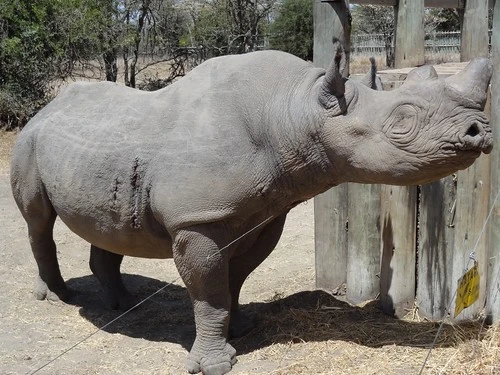
This sanctuary is famous because Baraka acts as an incredible ambassador for his critically endangered species, allowing visitors a unique and close encounter. His story highlights both the challenges faced by rhinos and the dedicated conservation efforts to protect them.
History of Baraka the Black Rhino
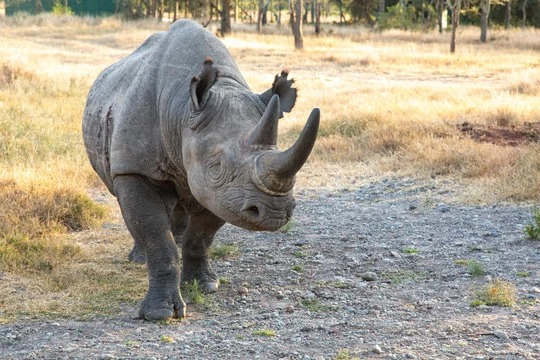
Baraka, whose name means "blessing" in Swahili, was born wild on November 20, 1994, within what is now Ol Pejeta Conservancy. He lived a natural life until he tragically lost sight in his right eye during a fight with another rhino in 2008.
Later, a cataract claimed the sight in his left eye, leaving him completely blind and vulnerable in the wild. Recognizing his inability to survive, the Ol Pejeta team moved him to his current secure enclosure, ensuring his safety and continuous care.
Baraka the Black Rhino now plays a vital role in educating visitors, especially children, about rhino conservation.
Visiting Baraka the Rhino Enclosure Location
- Parent Destination(s): Ol Pejeta Conservancy.
- Specific Location/Address: Located within the Morani Information Centre area, Ol Pejeta Conservancy, Laikipia County, in Kenya.
- GPS Coordinates: The specific coordinates for the enclosure are not clear on the map. However, Ol Pejeta Conservancy is generally located around 0.0020° N, 36.9520° E. The enclosure is well-signposted within the conservancy.
- How to Access: Accessible by vehicle once within Ol Pejeta Conservancy. The conservancy is typically reached from Nanyuki town.
- Proximity to Key Landmarks/Towns:
- Situated near Nanyuki town.
- It is part of the Morani Information Centre complex.
- Close to the Sweetwaters Chimpanzee Sanctuary, also within Ol Pejeta Conservancy.
Experience at The Baraka Black Rhino Sanctuary
A visit to Baraka the Black Rhino offers a very personal and educational wildlife experience. Visitors can approach a feeding station at his boma (enclosure).
Under the supervision of his keepers, there's often a chance to feed Baraka his natural food (browse) and sometimes even touch him. This provides a rare connection with a black rhino.
Rangers share Baraka's story, information about black rhino behavior, their endangered status, and Ol Pejeta's conservation work. It’s an excellent spot for photography and learning.
Unique Facts About Baraka Rhino Sanctuary
- Ambassador Animal: Baraka is a significant ambassador for black rhino conservation.
- Safety Haven: His 100-acre enclosure provides 24/7 security and care.
- Educational Impact: Instrumental in inspiring a connection and passion for conservation between humans and wildlife.
- Resilience Story: Baraka's survival and adaptation highlight resilience in wildlife.
- Interactive Experience: Offers a rare chance for visitors to get very close to and even feed a black rhino under supervision.
Best Visiting Time for Baraka Rhino Enclosure
- Time of day: While Baraka can be seen throughout the day, feeding times are particularly good for interaction. These are often mid-morning and mid-afternoon, but it's best to check with Ol Pejeta Conservancy for specific schedules. Early morning or late afternoon visits generally offer more comfortable temperatures.
- Seasonality: Ol Pejeta Conservancy is open year-round. The experience at Baraka's enclosure is consistent, though the surrounding vegetation will be more lush after the rainy seasons (typically April-June and October-December).
Visitor Information for Baraka Enclosure
- Opening Hours: Baraka's enclosure is accessible during Ol Pejeta Conservancy's general hours, which are usually from 07:00 AM to 07:00 PM. Specific interaction times around feedings should be confirmed on arrival.
- Entry Fees: Access to Baraka the Blind Black Rhino Enclosure is included in the Ol Pejeta Conservancy entrance fee. There isn't a separate charge for visiting Baraka. Ol Pejeta has different rates for various resident statuses.
- Time Needed: Plan for about 30 minutes to 1 hour to fully experience the visit, listen to the keepers, and possibly interact with Baraka.
- Guided Tours Available: Conservancy rangers are on hand at the enclosure to provide information and facilitate the experience as part of the visit.
Facilities Near Baraka Rhino Enclosure
The enclosure is conveniently situated by the Morani Information Centre, which provides:
- Toilets
- Morani's Restaurant (café) for meals and drinks.
- A souvenir shop
- The Morani Information Centre, featuring educational displays.
- Picnic spots are available within the broader conservancy.
Photography Tips for Baraka Rhino Visit
- Best vantage points: The feeding platform offers excellent opportunities for close-up shots.
- Recommended lenses/gear: A mid-range zoom lens (e.g., 70-200mm) would be ideal for capturing both Baraka and the interaction. Avoid using flash.
- Time of day for best light: Early morning or late afternoon light is softer. Overcast conditions can also provide good lighting.
Safety And Access at Baraka Enclosure
Safety precautions:
- Always adhere to the guidance of the Ol Pejeta rangers and keepers.
- Only feed Baraka the food provided by the staff.
- Be mindful and keep a respectful distance unless at the designated interaction point.
Accessibility for people with mobility issues: The area around the Morani Information Centre and Baraka's enclosure is generally flat. The feeding platform is usually accessible, but it's best to confirm with Ol Pejeta if there are specific accessibility needs.
Conservation And Respectful Baraka Rhino Tourism
Specific rules:
- Follow all instructions from Ol Pejeta Conservancy staff.
- Do not litter.
- Keep noise levels low.
How visitors can help preserve it:
- The Ol Pejeta Conservancy entrance fee directly supports conservation efforts, including Baraka's care.
- Consider making a symbolic adoption of Baraka or an additional donation to Ol Pejeta.
- Share Baraka's story to raise awareness about the critical need for rhino conservation.
- Support responsible tourism that prioritizes wildlife welfare.
Check Out Ol Pejeta Conservancy Attractions
Discover more attractions and activities in Ol Pejeta Conservancy
Visit DestinationBook a Trip to Baraka the Blind Black Rhino Enclosure
Include Baraka the Blind Black Rhino Enclosure in your personalized Kenya safari itinerary and create unforgettable memories.
Plan My SafariMore Attractions
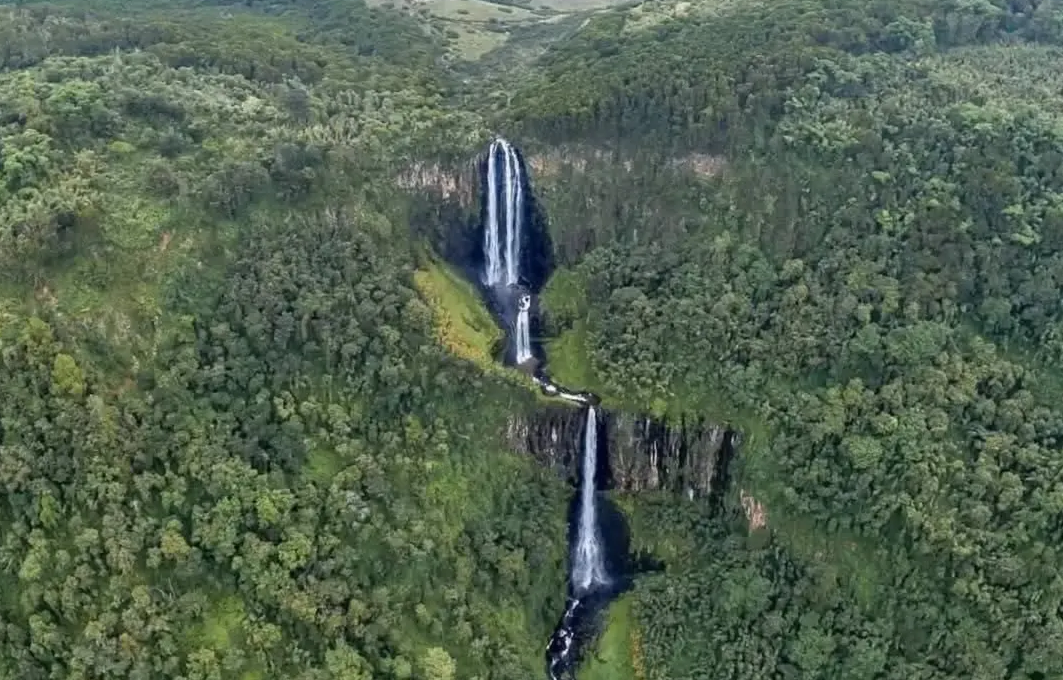
Karuru Falls (Aberdares)
Kenya's tallest waterfall in three breat...
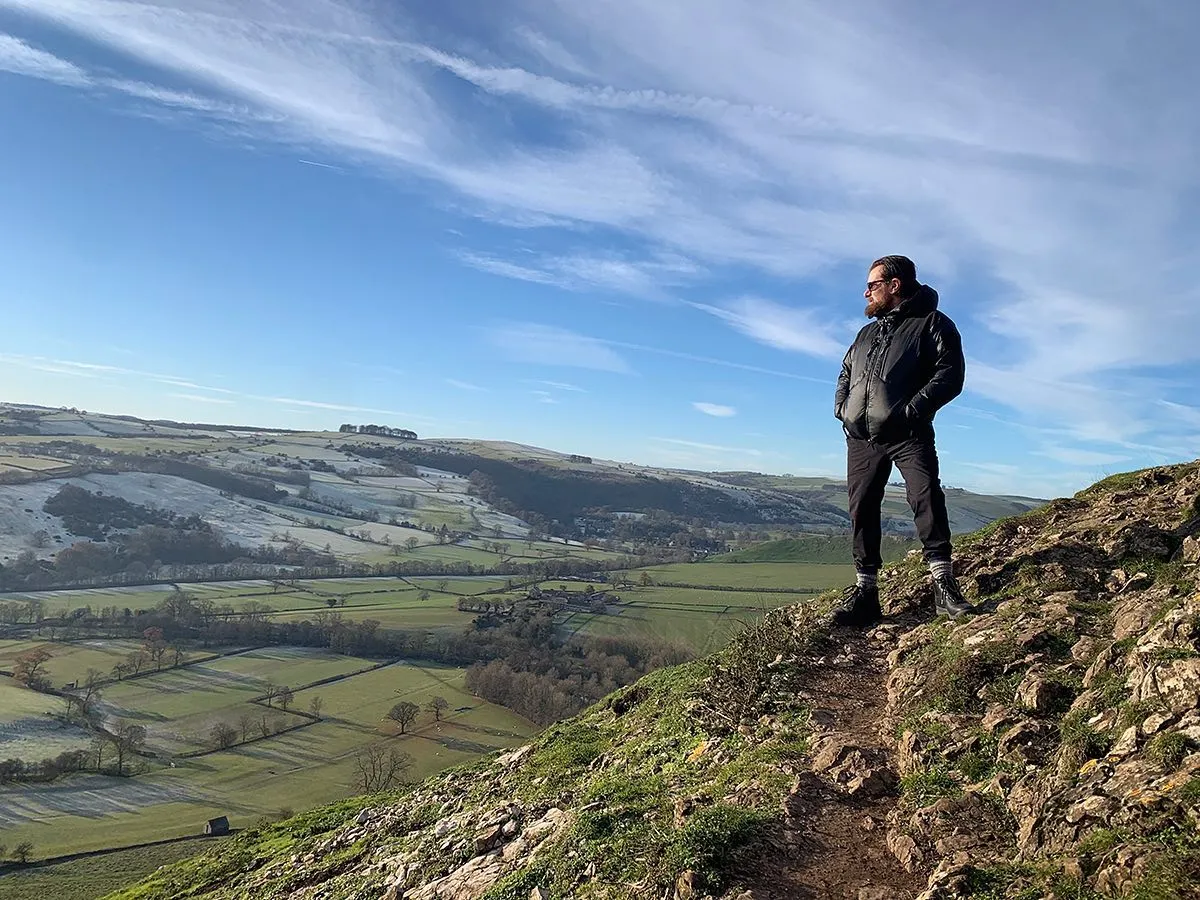
Chania Falls (Aberdares)
Serene waterfalls cascading over rocky l...
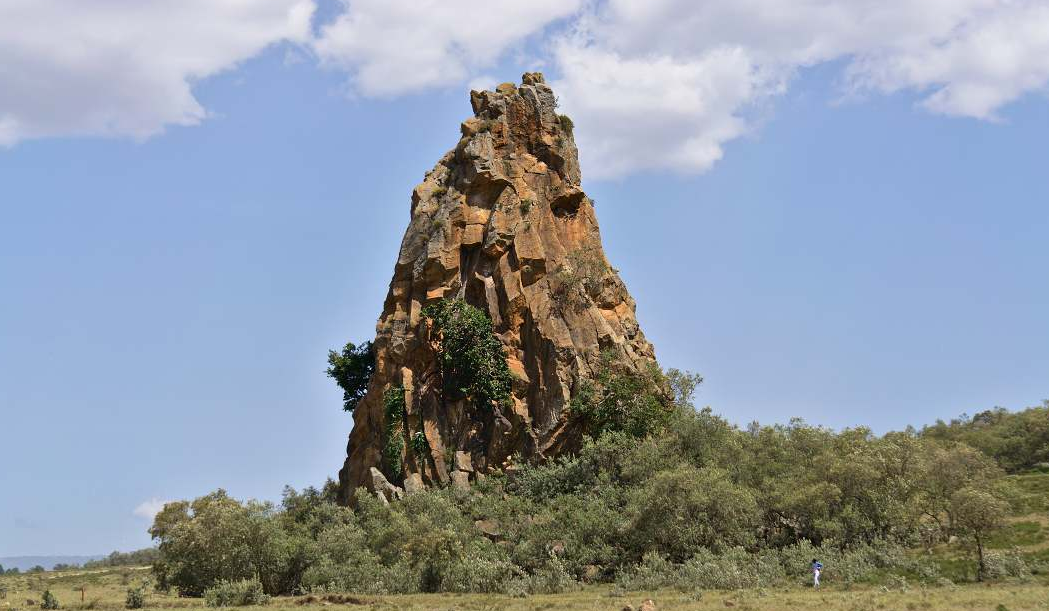
Buffalo Springs (Buffalo Springs NR)
Life-giving natural springs in the arid...
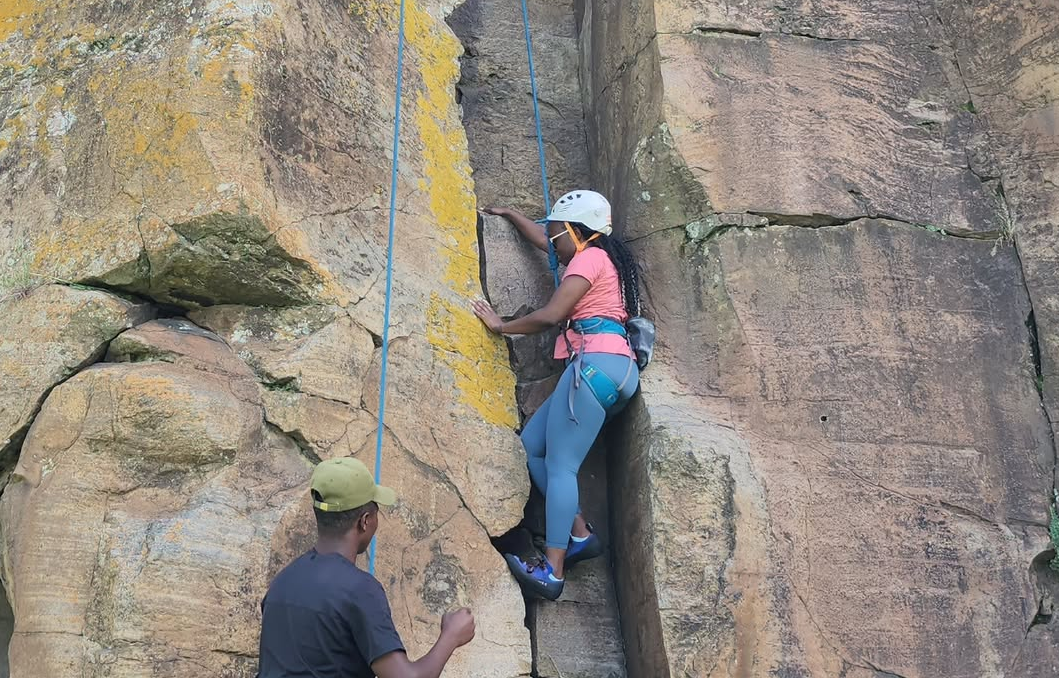
Fischer's Tower (Hell's Gate NP)
Iconic volcanic plug popular for rock cl...

Central Tower (Hell's Gate NP)
Impressive rock tower offering climbing...
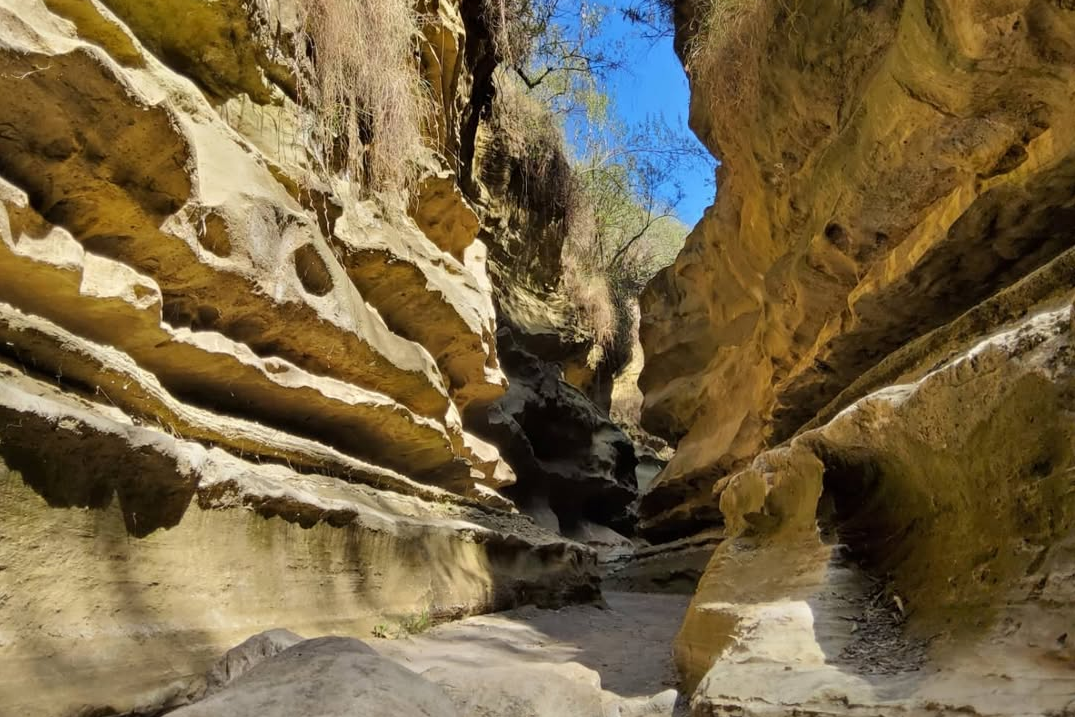
Ol Njorowa Gorge (Hell's Gate NP)
Dramatic gorge carved by ancient water f...